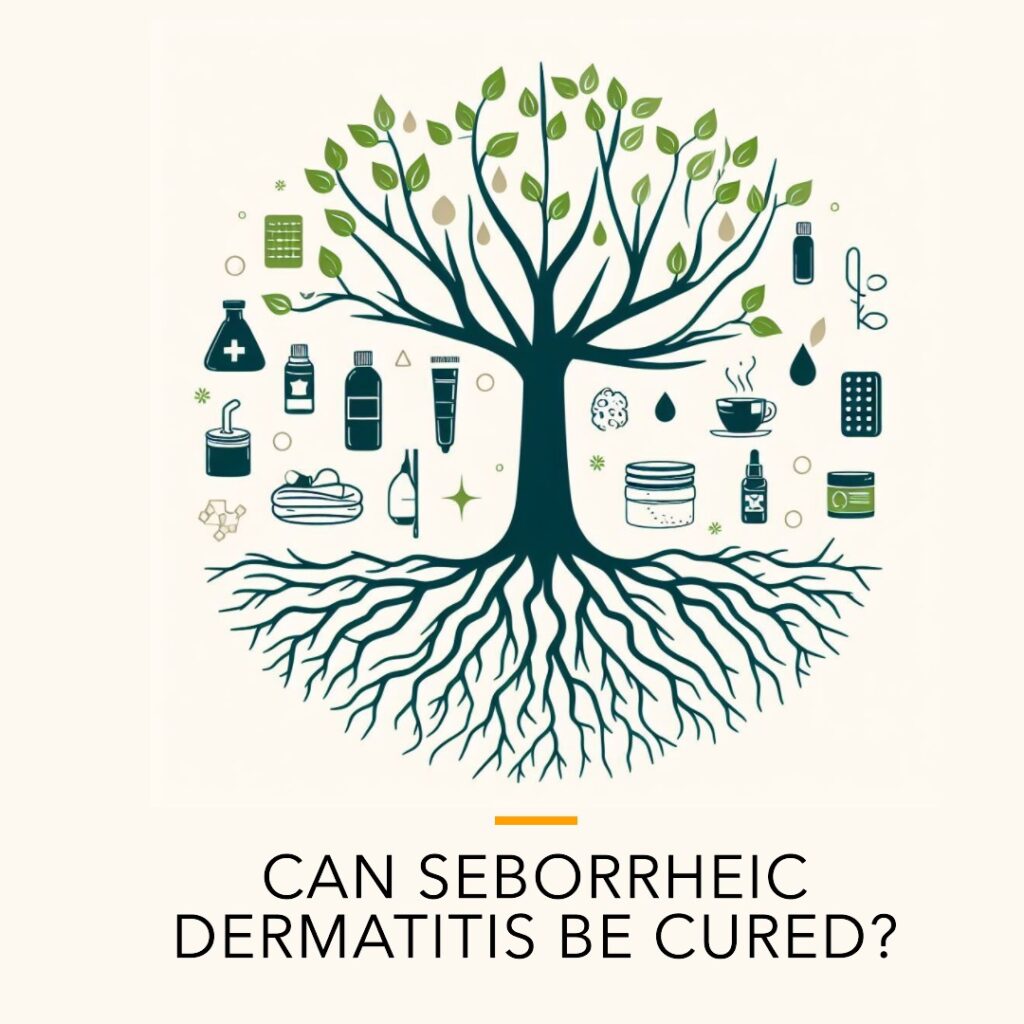Seborrheic dermatitis, also known as seborrheic eczema, is a common chronic inflammatory skin condition that mainly affects the scalp and face [1]. Characterized by red, flaky, itchy skin and dandruff, seborrheic dermatitis can be distressing and frustrating to deal with.
As a lifelong condition with periodic flare-ups, an obvious question arises – can seborrheic dermatitis be cured for good?
The Complex Nature of Chronic Skin Conditions
When it comes to skin disorders like seborrheic dermatitis, the notion of a «cure» is complex. Unlike acute infections that can be treated and resolved in a short time, chronic diseases involve various biological, psychological, and lifestyle factors [2].
For instance, even when treated successfully, some patients with chronic conditions still perceive themselves as «unhealed» [3]. Feeling «cured» encompasses more than just the physical symptoms and requires a holistic outlook.
Furthermore, while treatments can provide symptom relief, they often cannot eliminate the root causes behind complex conditions like seborrheic dermatitis [2]. Ongoing management is needed to maintain remission and prevent flare-ups.
Aiming for Long-Term Remission Through Multi-Targeted Approaches
Given the chronic nature of seborrheic dermatitis, the goal of treatment is typically long-term remission rather than an outright «cure» [3]. This involves using various therapies to control symptoms and keep flare-ups at bay.
Some key treatment approaches include:
- Topical antifungal agents like ketoconazole to reduce Malassezia yeast overgrowth, a contributor to seborrheic dermatitis [6].
- Topical anti-inflammatory creams containing steroids to calm inflammation [7].
- Antidandruff shampoos with ingredients like selenium sulfide and pyrithione zinc to reduce scalp irritation and flaking [8].
- Immunomodulators like tacrolimus that alter the immune response [1].
Rather than banking on a single «miracle cure,» using a combination of therapies that target different aspects of the condition is recommended for long-term management [10].
Lifestyle and self-care measures are also important:
- Managing stress levels, which can worsen seborrheic dermatitis [11].
- Avoiding skin irritants like harsh soaps.
- Following a balanced, nutritious diet [4].
With a multi-pronged approach, periods of remission can be extended and flare-ups minimized. While not a permanent cure, long-term symptom control is achievable.
The Psychological Aspects of Living With Chronic Skin Conditions
Aside from physical symptoms, the chronic nature of seborrheic dermatitis also takes a psychological toll – anxiety, depression, and lowered self-esteem are common [12].
As symptoms persist for years, patients may feel hopeless and assume they will never be «cured.» Unrealistic expectations create more frustration when a definitive cure remains elusive.
Therefore, managing chronic skin conditions like seborrheic dermatitis requires addressing both physical and mental health [13]. Being patient and focusing on achievable treatment goals are key for coping psychologically. Support groups can also provide emotional support.
Looking Ahead: Advancing Our Understanding
While current therapies can effectively manage symptoms long-term, there is still room for progress in understanding seborrheic dermatitis. For instance, questions remain about:
- The precise roles of yeasts like Malassezia in causing inflammation [14].
- Why seborrheic dermatitis develops in the first place [15].
- How different treatments like antifungals and steroids work on a molecular level [16].
With continued research, our knowledge can expand to uncover new treatment targets and options. Gene-based therapies may emerge as we unravel the genetic underpinnings of seborrheic dermatitis [17, 18].
For now, a sustained, multi-therapy approach offers the best chance at long-term remission. While seborrheic dermatitis cannot be permanently «cured,» its impacts can be reduced significantly through diligent management. With the right treatment plan and outlook, living symptom-free for extended periods is an achievable goal.
